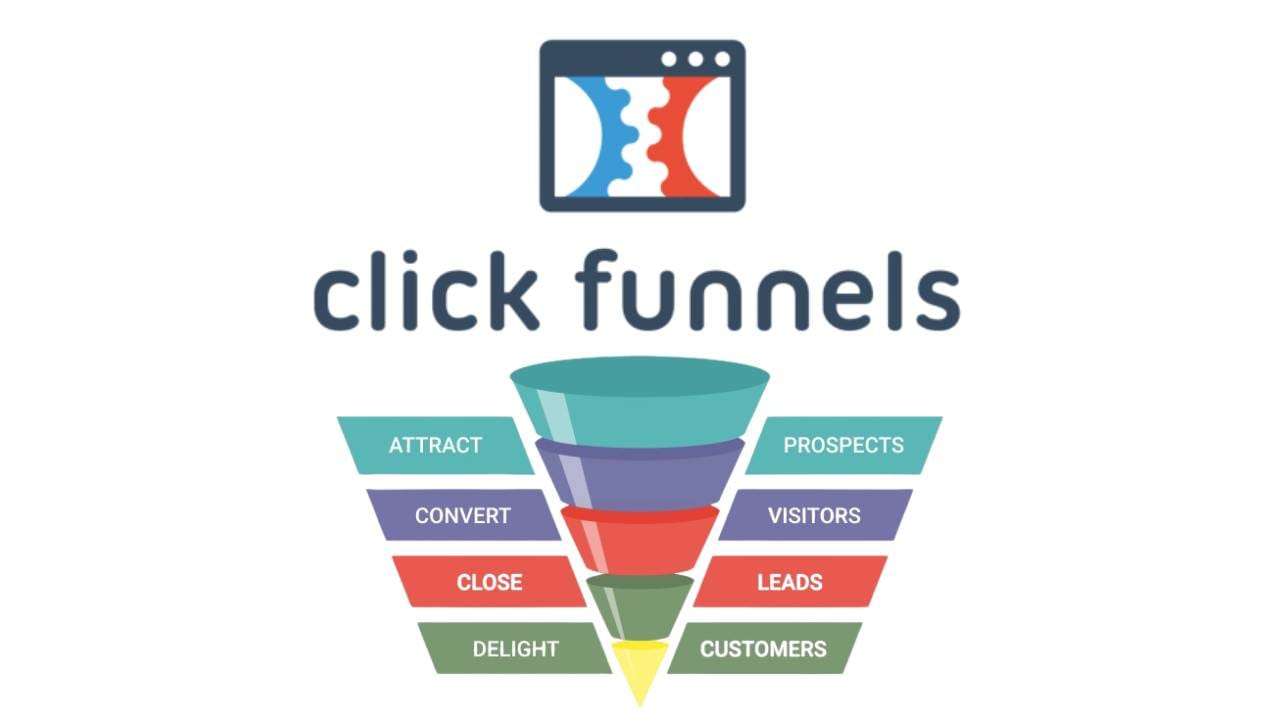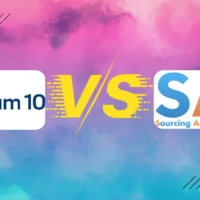Digital marketing has evolved into one of the most critical aspects of modern business growth. With countless brands competing for attention online, having a clear understanding of how to plan, execute, and optimize digital marketing strategies can make the difference between standing out or fading into the noise. This guide aims to help you navigate the complex world of digital marketing, step-by-step, revealing proven techniques and best practices that will increase your chances of success. From building a solid foundation to mastering advanced tactics, you will learn how to reach the right audiences, communicate effectively, measure results, and adapt to ever-changing market conditions. By the end of this comprehensive resource, you should feel confident in your ability to create strategic digital marketing plans and drive sustained growth for your brand.
Understanding the Foundations of Digital Marketing
Before diving deep into tactics, it’s crucial to understand what digital marketing truly encompasses. At its core, digital marketing refers to all marketing efforts that utilize the internet and online-based digital technologies. It involves reaching audiences through digital channels, including websites, search engines, social media platforms, email, mobile apps, and more. While traditional marketing uses mediums like television or print, digital marketing leverages interactive touchpoints that often allow for more precise targeting, real-time feedback, and better performance tracking.
Why Digital Marketing Matters
Digital marketing matters because consumers increasingly rely on the internet to find information, discover products, and make purchasing decisions. Instead of relying solely on billboards or newspaper ads, businesses now reach potential customers through platforms where audiences already spend their time. This shift gives marketers powerful tools to tailor messages, personalize experiences, and measure effectiveness like never before. Digital marketing also levels the playing field, allowing smaller brands to compete with larger players through smart strategy and targeted approaches.
Key Components of Digital Marketing
The digital marketing landscape can be vast. Key components include:
- Search Engine Optimization (SEO): Improving a site’s visibility on search engine results pages (SERPs).
- Content Marketing: Creating and distributing valuable, relevant content to attract and engage your audience.
- Social Media Marketing: Leveraging social platforms like Facebook, Instagram, LinkedIn, and TikTok to interact with potential customers.
- Email Marketing: Communicating with subscribers via email to nurture leads, share updates, and encourage repeat business.
- Paid Advertising (PPC): Running targeted ads across platforms like Google Ads or social media to quickly reach potential customers.
- Affiliate and Influencer Marketing: Partnering with industry influencers or affiliates to promote your brand to their followers.
- Analytics and Reporting: Measuring key performance indicators (KPIs), tracking conversions, and using data to optimize strategies.
Defining Clear Goals and Objectives
A digital marketing strategy without clear goals is like driving without a destination. Defining objectives provides a roadmap for decision-making, resource allocation, and ongoing measurement. Before committing to specific tactics, think about what you want to achieve.
Aligning Marketing Goals with Business Objectives
Start by understanding overarching business goals, such as:
- Increasing revenue by a certain percentage
- Growing brand awareness in new markets
- Boosting market share for a specific product line
- Improving customer retention or reducing churn
These larger business objectives guide digital marketing campaigns. For instance, if you want to increase sales, you might focus on conversions and set targets for lead generation. If expanding brand awareness is your priority, you could prioritize strategies like social media reach, influencer collaborations, and SEO-driven traffic growth.
Setting SMART Goals
When establishing your marketing objectives, use the SMART framework:
- Specific: Clearly state what you want to achieve.
- Measurable: Ensure you can track progress using metrics.
- Achievable: Set goals that are challenging but within reach.
- Relevant: Align marketing goals with overall business objectives.
- Time-Bound: Assign deadlines to create a sense of urgency and focus.
For example, “Increase the number of qualified leads from our website by 30% in the next quarter” is a SMART goal because it’s specific, measurable, aligned with business growth, and time-bound.
Conducting Thorough Market and Audience Research
Knowing your target audience inside and out is the cornerstone of successful digital marketing. Understanding their demographics, interests, pain points, and decision-making processes helps tailor messages that resonate and inspire action.
Market Research Techniques
To gain insights into your industry and competition:
- Competitive Analysis: Study competitors’ digital presence. Evaluate their websites, social media profiles, and content strategies. Identify what they do well and where they fall short.
- Keyword Research: Use tools like Google Keyword Planner or SEMrush to discover which terms your audience searches for most. This informs both SEO and content strategy.
- Industry Reports and Surveys: Read market research reports, surveys, and industry news to uncover emerging trends, consumer preferences, and opportunities for differentiation.
Audience Research Techniques
To get to know your ideal customers better:
- Buyer Personas: Develop semi-fictional representations of your ideal customers, detailing their age, job title, challenges, and goals. Personas guide content creation, messaging style, and channel selection.
- Social Listening: Monitor social media conversations to understand what consumers say about your brand, competitors, and the broader industry. Tools like Hootsuite or Sprout Social can help.
- Customer Surveys and Interviews: Ask existing customers for feedback through surveys or one-on-one interviews. Their insights can reveal pain points and highlight what makes your product or service valuable.
Building a High-Performing Website
Your website is often the digital hub of your marketing efforts. It serves as a platform for showcasing products, sharing informative content, and converting visitors into customers. A well-designed, user-friendly site positively impacts brand perception and encourages visitors to take desired actions.
User Experience and Website Design
A great user experience (UX) makes it easy for visitors to find information and engage with your brand. Focus on:
- Clean Navigation: Intuitive menus, clear calls-to-action (CTAs), and logical page hierarchy help users find what they need quickly.
- Mobile Responsiveness: With more people browsing on smartphones, ensure your site looks and functions well on all devices.
- Fast Loading Times: Compress images, use a reliable hosting service, and optimize code to keep load times under three seconds. Slow sites drive users away.
- Accessible Design: Use high-contrast color schemes, descriptive alt tags for images, and keyboard-friendly navigation. Accessibility improves user satisfaction and may prevent legal issues.
Search Engine Optimization (SEO) Basics
SEO is critical for increasing your website’s visibility. Start with:
- Keyword Optimization: Incorporate relevant keywords in page titles, headings, meta descriptions, and body copy. Avoid keyword stuffing and focus on readability.
- Quality Content: Publish useful, original, and well-structured content that solves user problems. Quality content encourages higher rankings, social shares, and backlinks.
- Technical SEO: Improve crawlability by ensuring your site’s structure is logical, implementing schema markup, and regularly fixing broken links or error pages.
- On-Page and Off-Page Factors: Focus on internal linking and building reputable backlinks from industry-related websites to boost your domain authority.
Crafting a Content Marketing Strategy
Content marketing drives organic traffic, builds trust, and positions your brand as an authority. It involves creating valuable, consistent content that speaks directly to your audience’s interests and needs.
Types of Content
Digital marketing success often hinges on a diverse content portfolio, including:
- Blog Posts and Articles: Informative, long-form guides or news updates that educate and engage readers.
- Videos and Webinars: Dynamic, visual content that demonstrates products, explains concepts, or entertains.
- Infographics and Visuals: Eye-catching designs that convey complex data quickly.
- Podcasts and Audio Content: Engaging discussions that let audiences consume information while multitasking.
- Downloadable Resources: Ebooks, whitepapers, templates, and checklists that serve as lead magnets.
Developing an Editorial Calendar
A structured editorial calendar helps maintain consistency and ensures content aligns with business goals. When creating a calendar:
- Set Topics in Advance: Brainstorm themes and topics relevant to your audience’s interests and pain points.
- Assign Responsibilities: Determine who will write, edit, design, and promote each piece.
- Use Seasonal and Evergreen Content: Mix timely, seasonal articles with evergreen topics that remain valuable over time.
- Incorporate SEO Keywords: Map target keywords to each piece of content, ensuring steady organic traffic growth.
Promoting and Distributing Content
Publishing is only half the battle. You must distribute content effectively:
- Social Media Sharing: Post updates on platforms where your audience is active. Tailor messaging and visuals to each network’s norms.
- Email Newsletters: Send curated roundups or highlight new content to your subscriber list.
- Influencer Collaborations: Partner with influencers or industry experts to expand reach and credibility.
- Paid Promotion: Use social ads or display campaigns to boost visibility for important content.
Leveraging Social Media Marketing
Social media is a powerful tool for building brand awareness, fostering community, and driving website traffic. With billions of users worldwide, platforms like Facebook, Instagram, LinkedIn, Twitter (X), Pinterest, and TikTok offer immense opportunities to engage existing customers and reach new audiences.
Choosing the Right Platforms
Not all social networks are equal. Select platforms based on your target audience and marketing goals:
- Facebook: Broad user base, suitable for community building and sharing various content formats.
- Instagram: Visual storytelling, ideal for brands in fashion, food, travel, and lifestyle niches.
- LinkedIn: Professional networking, effective for B2B marketers and thought leadership.
- Twitter (X): Fast-paced updates, great for news, quick engagement, and trending conversations.
- TikTok: Short-form video platform that appeals to younger audiences and creative storytelling.

Crafting a Social Media Content Plan
Once you’ve chosen your platforms, follow these guidelines:
- Brand Voice and Style: Ensure consistency in tone, messaging, and visual identity across platforms.
- Engaging Formats: Experiment with videos, polls, quizzes, live streams, and user-generated content to keep followers interested.
- Posting Frequency and Timing: Find the optimal posting schedule based on audience activity and engagement metrics.
- Community Management: Respond to comments, messages, and reviews promptly. Show appreciation for positive feedback and address negative remarks constructively.
Tracking Social Media Metrics
Monitor key social metrics to measure success and improve strategies:
- Engagement Rate: Likes, comments, shares, and saves indicate how well your content resonates.
- Follower Growth: Tracking follower counts over time shows whether your content attracts new fans.
- Click-Through Rate (CTR): Assess how effectively posts drive website traffic or conversions.
- Conversion Tracking: Measure how many leads or sales originate from social referrals.
Implementing Email Marketing Campaigns
Email marketing remains one of the highest-ROI digital marketing channels. By reaching subscribers directly in their inboxes, you can nurture leads, encourage repeat purchases, and keep customers informed about new offerings.
Building Your Email List
A quality email list consists of individuals genuinely interested in hearing from you. To build this list:
- Lead Magnets: Offer valuable freebies, like ebooks or discount codes, in exchange for email addresses.
- Pop-Up Forms and Landing Pages: Use well-timed pop-ups and dedicated landing pages to capture leads without disrupting the user experience.
- Co-Marketing Partnerships: Team up with complementary brands to share leads, as long as subscribers have granted permission.
You may like: What is AppSumo?
Segmenting Your Audience
Not all subscribers have the same needs. Segmenting improves relevance and engagement:
- Demographics: Group subscribers by age, location, or gender if relevant to your offerings.
- Behavioral Segmentation: Target subscribers based on past purchases, browsing activity, or engagement with previous emails.
- Lifecycle Stages: Tailor content for new leads, active customers, or lapsed clients to increase conversions and loyalty.
Creating Effective Email Content
Email success depends on both strategy and creativity:
- Compelling Subject Lines: Write short, descriptive subject lines that spark curiosity and convey value.
- Personalization: Address subscribers by name and reference their past interactions when possible. Personalized emails often outperform generic blasts.
- Clear CTAs: Make it easy for readers to take action—whether it’s reading a blog post, redeeming a coupon, or making a purchase.
- Mobile Optimization: Ensure emails look great on smartphones and tablets. Use responsive design and concise copy.
Measuring Email Marketing Results
Evaluate your email performance using:
- Open Rate: The percentage of recipients who open your email, influenced by subject lines and sender reputation.
- Click-Through Rate (CTR): The number of subscribers who click a link within your email. Higher CTRs often result from compelling CTAs.
- Conversion Rate: The percentage of email recipients who complete a desired action, such as making a purchase.
- Unsubscribe Rate and Spam Complaints: Keep these low by delivering valuable, relevant content and respecting subscriber preferences.
Mastering Paid Advertising (PPC)
While organic methods take time to gain traction, paid advertising allows you to reach potential customers quickly. Pay-per-click (PPC) campaigns, such as Google Ads or social media ads, can deliver immediate traffic and conversions if executed correctly.
Choosing the Right Advertising Channels
Select channels based on your target audience and campaign goals:
- Google Ads: Ideal for capturing intent-driven traffic. Users who search for specific keywords may be further along the buying journey.
- Facebook and Instagram Ads: Useful for raising brand awareness, retargeting website visitors, and promoting products to defined demographic groups.
- LinkedIn Ads: Perfect for B2B marketing, targeting professionals by industry, job title, and company size.
- YouTube Ads: Great for video storytelling and reaching users interested in specific content categories.
Crafting High-Converting Ad Copy and Creatives
Effective PPC campaigns rely on compelling messaging and visuals:
- Concise Messaging: Communicate value quickly. Highlight unique selling points (USPs), promotions, or benefits in a few words.
- Strong CTAs: Use phrases like “Shop Now,” “Learn More,” or “Get Started” to guide users toward the desired action.
- A/B Testing: Experiment with different headlines, images, and formats to find winning combinations.
Optimizing PPC Campaigns
PPC success depends on continuous improvement:
- Keyword Management: Add new high-performing keywords, pause low-converting terms, and use negative keywords to filter out irrelevant searches.
- Bid Adjustments: Increase or decrease bids based on device, location, time of day, or audience segments to maximize ROI.
- Ad Extensions: Use site links, callouts, and structured snippets to provide more information and increase CTR.
Tracking and Measuring PPC Performance
Monitor these metrics to evaluate your paid campaigns:
- Cost Per Click (CPC): The average amount you pay for each ad click.
- Click-Through Rate (CTR): The percentage of impressions that result in clicks, indicating ad relevance.
- Conversion Rate and Cost Per Acquisition (CPA): Assess how well your ads drive profitable actions and how much each conversion costs.
- Return on Ad Spend (ROAS): Compare revenue generated by the campaign to ad spend, providing a clear indicator of profitability.
Harnessing Influencer and Affiliate Marketing
Influencer and affiliate marketing leverage external partners who already have authority, credibility, or reach within your target niche. Collaborating with the right influencers or affiliates can extend your brand’s visibility and drive sales.
Choosing Influencers
Influencer success depends on aligning values, niche, and audience:
- Relevance: Select influencers who cater to your industry and share content that aligns with your brand’s mission.
- Engagement Over Follower Count: A smaller influencer with a highly engaged audience can drive better results than a larger influencer with a disengaged following.
- Authenticity: Look for influencers who create honest, relatable content rather than overly promotional posts.
Structuring Affiliate Partnerships
Affiliates promote your products and earn commissions on resulting sales. To set up an affiliate program:
- Attractive Commission Rates: Offer competitive payouts to incentivize affiliates to promote your brand.
- High-Quality Marketing Materials: Provide custom landing pages, banner ads, product images, and promotional copy.
- Ongoing Support and Communication: Keep affiliates informed about new products, promotions, and best practices to maintain motivation.
Measuring Influencer and Affiliate Results
Evaluate the ROI of these partnerships:
- Referral Traffic: Track clicks from influencer posts or affiliate links.
- Conversion Rates: Measure how many referred visitors complete desired actions.
- Affiliate Tracking Tools: Use tracking links and affiliate networks to monitor performance, ensuring transparency and accurate payouts.
Embracing Video Marketing
Video marketing has surged in popularity due to its ability to convey stories quickly and dynamically. Consumers often prefer watching videos over reading text, making this format a powerful tool for brand visibility, engagement, and conversions.
Types of Video Content
Explore various formats:
- Product Demonstrations: Show how your product works, its features, and benefits.
- Customer Testimonials: Highlight happy clients who share their experiences to build trust.
- Behind-the-Scenes Content: Give viewers an inside look at your company’s culture, processes, or product creation.
- Educational Tutorials: Teach viewers useful skills or concepts, positioning your brand as a helpful expert.
- Live Streaming: Host Q&A sessions, interviews, or events in real-time, encouraging interaction and community building.
Optimizing Videos for Search and Engagement
To maximize visibility and engagement:
- Keyword-Rich Titles and Descriptions: Help search engines understand your video’s topic by including relevant terms.
- Closed Captions and Transcripts: Make your videos accessible and searchable. Some viewers prefer watching without sound.
- Attention-Grabbing Thumbnails: Use compelling images and clear text overlays to entice clicks.
- Promotion Across Channels: Share videos on social media, embed them in blog posts, and include links in email newsletters.
Utilizing Marketing Automation and CRM Tools
As your digital marketing efforts scale, managing leads, campaigns, and analytics manually becomes cumbersome. Marketing automation and Customer Relationship Management (CRM) tools streamline workflows, nurture leads at scale, and ensure data-driven decision-making.
Marketing Automation Benefits
Automation helps with:
- Lead Nurturing: Automatically send targeted emails or messages based on user behavior, guiding prospects through the sales funnel.
- Segmentation: Dynamically segment contacts as they engage with your brand, ensuring relevant content delivery.
- Workflow Efficiency: Schedule social media posts, rotate ads, or trigger campaigns without constant manual oversight.
- Analytics Integration: Track user activity across multiple touchpoints and attribute conversions to specific campaigns.
CRM Integration
A CRM system centralizes customer data, interactions, and purchase history, enabling:
- Holistic Customer Profiles: Understand each lead’s journey, interests, and previous communications to personalize outreach.
- Sales and Marketing Alignment: Keep sales teams informed with real-time lead data so they can follow up effectively.
- Data-Backed Decisions: Use CRM reports to identify patterns, spot high-value accounts, and refine marketing strategies.
Measuring Success and Adjusting Strategies
Digital marketing thrives on continuous improvement. Tracking metrics, analyzing results, and adjusting tactics is an ongoing process.
Key Performance Indicators (KPIs)
Select KPIs that align with your goals:
- Website Traffic and User Engagement: Track unique visits, time on site, pages per session, and bounce rate.
- Lead Generation and Conversion Rates: Measure how many website visitors become leads and how many leads turn into paying customers.
- Cost and Revenue Metrics: Assess cost per lead (CPL), cost per acquisition (CPA), and ROAS to ensure profitability.
- Brand Awareness Metrics: Monitor brand mentions, social media reach, share of voice, and overall brand sentiment.
Data Analysis Tools
Use analytics tools to interpret data and identify trends:
- Google Analytics: Understand where traffic comes from, how users behave, and which pages convert best.
- Social Media Analytics Tools: Evaluate platform-specific metrics to see which content resonates and which campaigns drive engagement.
- Heatmaps and Session Recordings: Analyze user behavior on your website to spot usability issues, popular content, or reasons for drop-offs.
Iterative Improvement
Success doesn’t happen overnight. Embrace a cycle of constant enhancement:
- Test and Learn: Conduct A/B tests or multivariate tests to determine which changes result in better conversions.
- Review Campaign Performance: Evaluate each campaign’s ROI and use insights to optimize future efforts.
- Stay Agile: Digital marketing trends and algorithms change frequently. Keep learning, experimenting, and adapting to maintain a competitive edge.
Staying Updated on Trends and Best Practices
What worked last year may not be as effective today. Continuous learning and adaptation are essential to staying ahead in digital marketing.
Keep an Eye on Industry Blogs and Publications
Follow reputable digital marketing blogs, podcasts, and newsletters to stay informed about:
- Algorithm Updates: Understand how Google, Facebook, or Instagram algorithm changes impact your strategies.
- New Tools and Platforms: Discover emerging platforms, marketing software, or ad networks that could give you an advantage.
- Consumer Behavior Shifts: Track changes in consumer preferences, social media usage patterns, and online shopping trends.
Attend Webinars, Conferences, and Workshops
Invest in your professional development by:
- Attending Industry Events: Conferences and workshops provide networking opportunities and fresh perspectives from experts.
- Participating in Webinars: Learn from thought leaders who share case studies, strategies, and best practices in real-time.
- Enrolling in Online Courses: Gain credentials and deepen expertise through structured learning programs.
Experiment with Emerging Technologies
Emerging technologies can offer unique advantages:
- Voice Search and Smart Assistants: Adapt content for voice queries and leverage voice-enabled devices.
- Augmented Reality (AR) and Virtual Reality (VR): Use immersive experiences to showcase products or create memorable marketing campaigns.
- Artificial Intelligence (AI) and Machine Learning: Automate tasks, predict consumer behavior, and personalize marketing efforts at scale.
Building a Cohesive Digital Marketing Ecosystem
Succeeding in digital marketing often means integrating multiple channels and tactics into a cohesive ecosystem. When every element—from your website to social media, email campaigns, and paid advertising—works in harmony, you create a powerful brand presence that consistently engages audiences and converts leads into loyal customers.
Also Read: Bluehost Vs Hostinger
Ensuring Message Consistency
No matter where users interact with your brand, they should encounter a unified message and identity. Ensure consistent:
- Brand Voice and Tone: Align language, humor, and style across all communication channels.
- Visual Identity: Use consistent colors, fonts, logos, and graphic styles to strengthen brand recognition.
- Value Proposition: Reinforce your brand’s core value across touchpoints, so users understand what sets you apart.
Cross-Channel Promotion
Integrate channels to multiply results:
- Link Social Posts to Blog Content: Drive readers from social platforms to in-depth articles or landing pages that nurture leads further.
- Use Email to Spotlight Social Campaigns: Highlight successful social campaigns, user-generated content, or special offers within emails.
- Retarget Visitors with Paid Ads: Show relevant ads to users who engaged with your website or social profiles, encouraging them to return and convert.
Continuous Improvement Through Holistic Analysis
Step back and look at the bigger picture of your digital ecosystem:
- Attribution Modeling: Determine which channels contribute most to conversions. Understanding the customer journey helps allocate resources effectively.
- Cohesive Reporting: Consolidate metrics from various platforms into a unified dashboard. This allows you to spot trends and identify optimization opportunities.
Cultivating a Growth Mindset and Long-Term Vision
Digital marketing is a marathon, not a sprint. Immediate wins can happen, but long-term success comes from sustained effort, a willingness to learn, and the ability to adapt as the market evolves.
Embrace Continuous Learning
As new trends and tools emerge, commit to ongoing education. Revisit your strategies regularly and ask:
- What’s Working Well? Identify strengths to replicate across campaigns.
- Where Are We Falling Short? Pinpoint weaknesses and implement data-driven adjustments.
- How Can We Innovate? Seek fresh approaches, experiment with new formats, and never settle for “good enough.”
Patience and Persistence
Building a robust digital presence takes time. Don’t be discouraged by slow initial progress. Instead, focus on incremental improvements and long-term gains. Each piece of content published, email sent, and ad tested contributes valuable data that shapes more effective strategies in the future.
Celebrate Milestones and Achievements
Recognize the value of both small and large victories. Celebrating achievements—like hitting a lead generation target or improving conversion rates—keeps your team motivated and invested in continuous growth. These accomplishments serve as milestones on the path toward long-term digital marketing success.
Conclusion: Your Path to Digital Marketing Success
Succeeding in digital marketing requires careful planning, targeted research, and a willingness to adapt. By setting clear goals, understanding your audience, and using a balanced mix of SEO, content marketing, social media, email campaigns, paid advertising, and influencer partnerships, you can reach the right people at the right time with the right message.
A user-friendly website, compelling content, and strong brand identity serve as a foundation for all your digital activities. Regularly measure results, refine tactics, and embrace new technologies to stay ahead of the curve. This holistic, data-driven, and customer-centric approach ensures that your digital marketing efforts produce lasting, meaningful results that contribute to your company’s growth and success.
Your journey will likely present challenges, from algorithm changes to competitive pressures, but these are opportunities to learn and improve. Stay curious, remain agile, and persistently strive for excellence. Over time, you will see the cumulative impact of informed, strategic digital marketing decisions—and enjoy the rewards that come with it.













